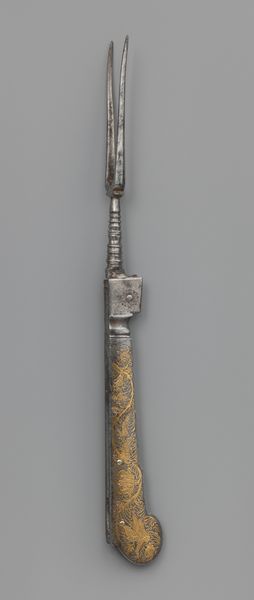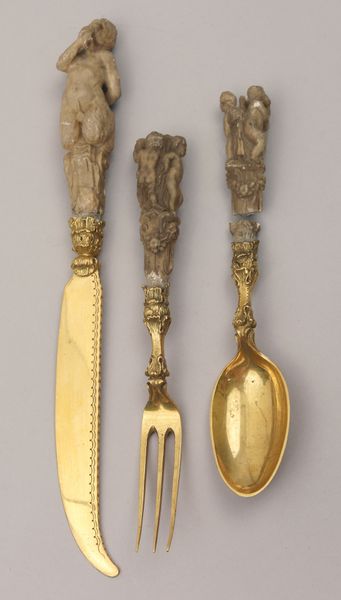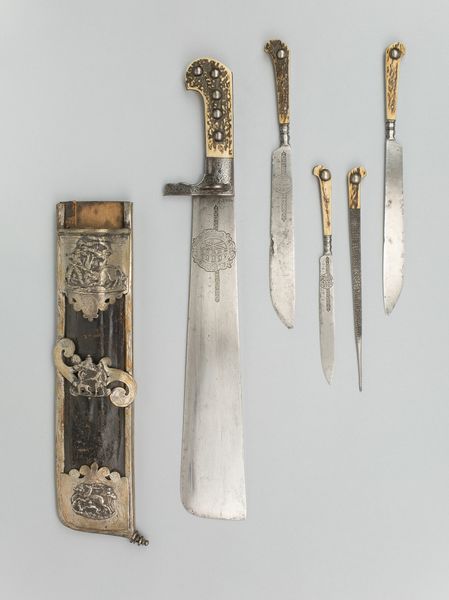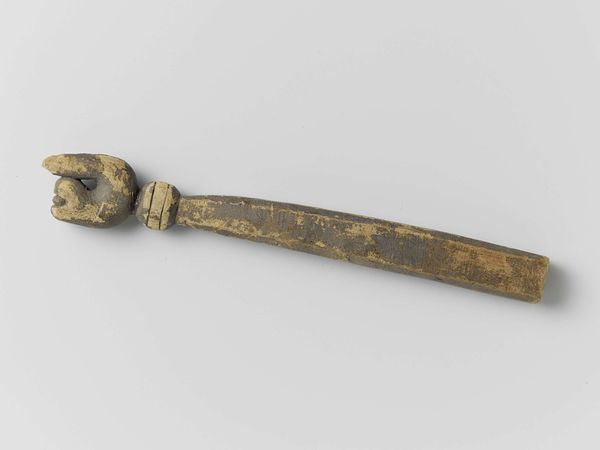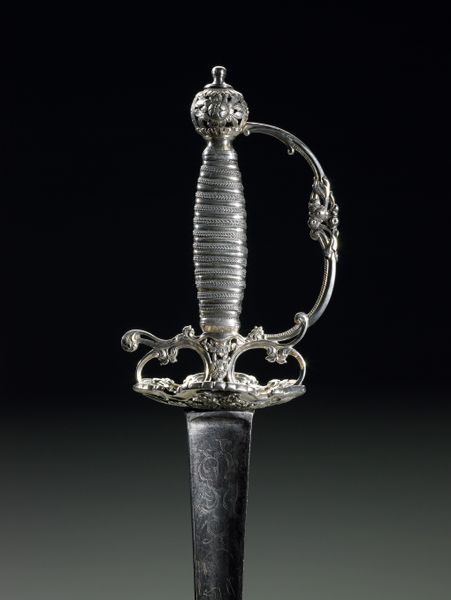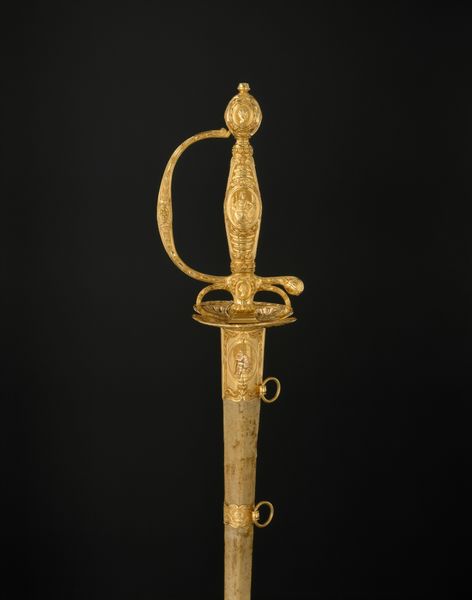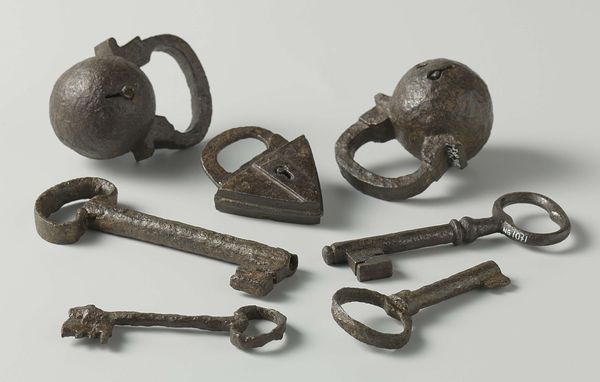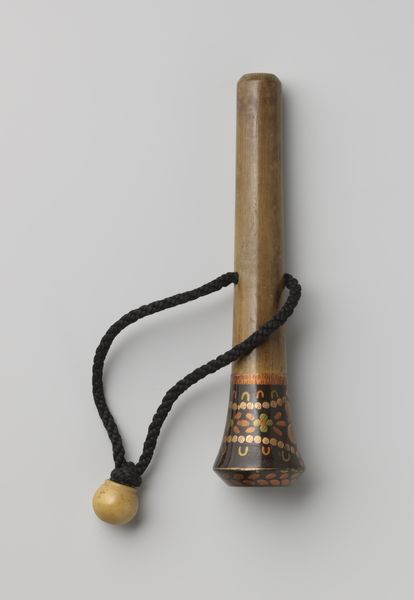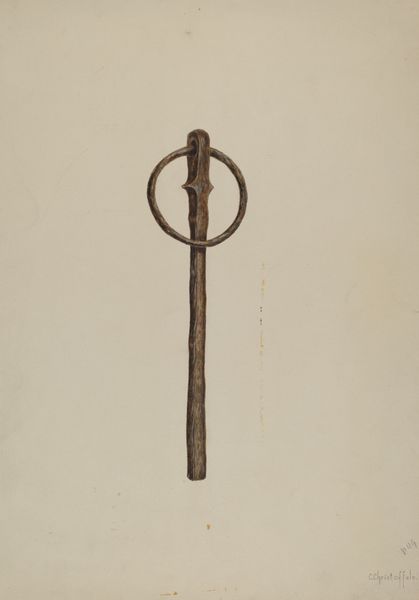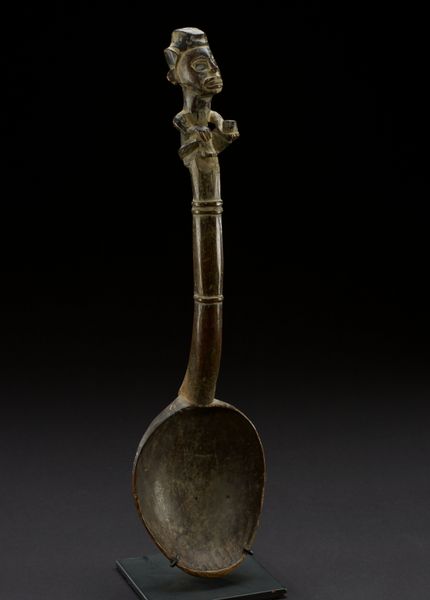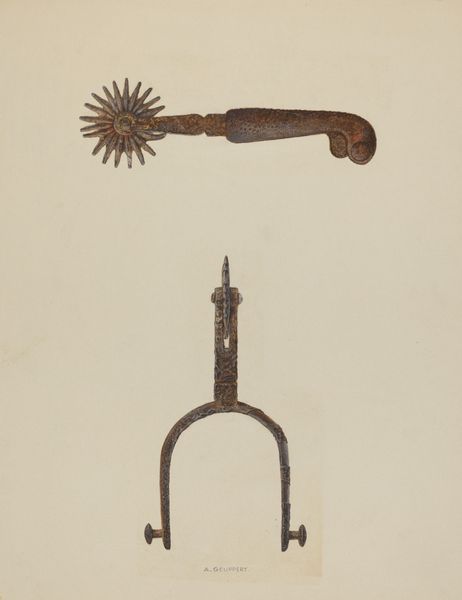
Knife, fork, spoon, and corkscrew in a case (Étui de couvert) 1685 - 1799
0:00
0:00
metal, sculpture
#
metal
#
sculpture
#
sculpture
#
decorative-art
Dimensions: Length (knife): 6 5/8 in. (16.8 cm); Length (fork): 5 7/8 in. (14.9 cm); Overall (spoon): 5 7/8 × 1 1/2 in. (14.9 × 3.8 cm); Overall (corkscrew, open): 3 1/2 × 1 1/2 in. (8.9 × 3.8 cm); Overall (case, closed): 9 × 2 5/8 × 2 1/2 in. (22.9 × 6.7 × 6.4 cm)
Copyright: Public Domain
This is an antique traveling set of utensils, including a knife, fork, spoon and corkscrew in a case. It was made anonymously, from silver. Imagine the circumstances in which such an object was needed, the kind of person who could afford such an item, and what that says about the history of travel and access. The material tells us about wealth and status, while the portability suggests the constant movement of the owner. Consider the historical context: were these tools made during a time of exploration, colonization, or trade? How might the act of dining on the move be related to societal hierarchies or cultural encounters? It makes me wonder about the contrast between the refined tools and the uncertain journeys during which they were used.
Comments
No comments
Be the first to comment and join the conversation on the ultimate creative platform.
